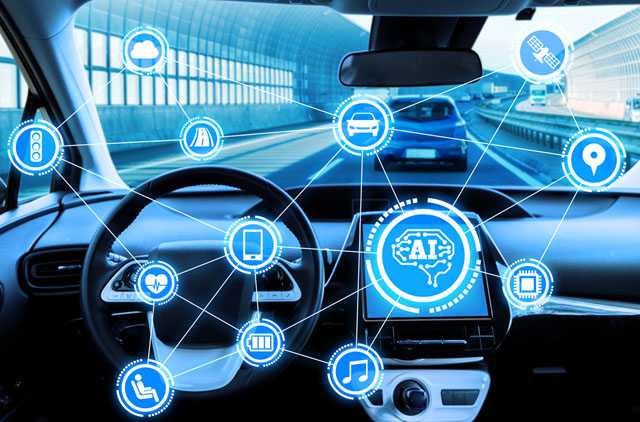
From Pilots to Passengers: The UX of Self-Driving Cars
I was fortunate to get to the Consumer Electronics Show in Las Vegas this year, and spent a lot of time in the North Hall of the LVCC, which held the latest offerings in transportation — everything from flying cars to super yachts to rideable luggage.
Many of the concept cars lacked what would be considered a traditional car cabin. Instead, the focus seemed to be on ultra-comfortable chairs, sleek interactions and displays on every imaginable cabin surface. Without a steering wheel or pedals, it would be difficult to recognize these as automobiles if I saw them out of context.
I've been keeping tabs on the development of self-driving cars, a.k.a autonomous vehicles, over the last few years. As the technology and infrastructure slowly take form as Silicon Valley powerhouses like Apple and Google put their muscle behind the tech, we'll experience societal changes not seen since the original motor car began to replace the horse and buggy.
I can't wait for this particular bit of future tech to come my way. Americans average around 26 minutes of daily driving to commute to their offices. That means we're spending months behind the wheel each year just to get to work. My own drive from New Hampshire to Massachusetts can take hours, each way. Add in New England winters and, well... I can think of much better ways to spend my time.
This is where self-driving cars comes in. In the true self-driving vehicle, meaning levels 4 and 5 on the autonomous scale from the Society of Automotive Engineers, the vehicle does all the driving. This means the "driver" is really a passenger, able to reclaim all the time that was previously spent driving into extra minutes or hours for getting a head start on email on the way to the office, or reading the news, or even catching a few extra minutes of sleep before the work day starts.
Obstacles Remain
Forbes predicts the global market for autonomous vehicles will reach nearly $557 billion by 2026. But there are still technical obstacles to tackle before our self-driving dream becomes a reality. For instance, making sense of what is seen in the roadway. Fast on-board processing that lets the computer-vision algorithms make sense of surroundings need to be flawless when distinguishing between an open roadway, another vehicle, or a pedestrian in a crosswalk. The technology is not quite there yet as issues persist when operating in poor weather conditions and harsh climates, something I care about as a survivor of many New England winters, but progress is happening quickly.
76% of executives involved with autonomous vehicles, including automakers, software developers and other stakeholders, expect it will take at least 10 years for true Level 5 cars to be market-ready, according to a recent study by TU-Automotive.
Once a vehicle knows what's around it, the next step is knowing how to navigate through that world. Technologists already have a good handle on the large-scale navigation, but the hard part is now making sure autonomous vehicles can safely navigate a world made up of other vehicles traveling at highway speeds. This is a machine-learning problem, where fast computation lets vehicles make decisions about safe travel much quicker than humans can. Factor in short-range wireless communications protocols that could let vehicles negotiate lane changes and merge scenarios with each other, and the roadways start to look much safer.
Most of these new vehicles are intended to be electric in nature.On one hand, this is great for green-technology advocates, and the reduced use of fossil fuels is a win for everyone. But the trade off is the infrastructure needed to pull that off. Existing battery technology only allows for what are considered medium-range vehicles, and the charging time is long once those batteries are drained. Major advances in energy storage will be required, along with building the network of power stations to handle charging.
Jarvis, Drive Me to Work
There are certainly many, pardon the pun, roadblocks that need to be overcome in order for fully autonomous cars to become publicly available and commonplace. Perhaps that's why 71 percent of people are still afraid to ride in fully self-driving vehicles, according to AAA's annual automated vehicle survey. There are technical challenges to be handled, legislation that needs to be passed, infrastructure that needs to be built.
At ICS, we're helping move this future closer to reality by working on projects with autonomous-driving innovators such as Phantom AI. (We're even working on autonomous flight.) While there's still plenty of work to be done, I'm looking forward to the day I can get into my car and say "Jarvis, drive me to work." Hopefully, my car will be smart enough to swing through Dunkin' Donuts along the way.
